Deploying Authoring and Live Environments
Overview
You can deploy an Author and Live environment when the InitPipeline job and its sub-jobs are successfully completed. The InitPipeline job pushes the Docker images required for deployment into the AWS (Amazon Web Services) Elastic Container Registry (ECR). The InitPipeline job is run as part of CloudDeploy initialization.
The following diagram shows the architecture of an Author and Live environment with a focus on autoscaling and load-balancing:
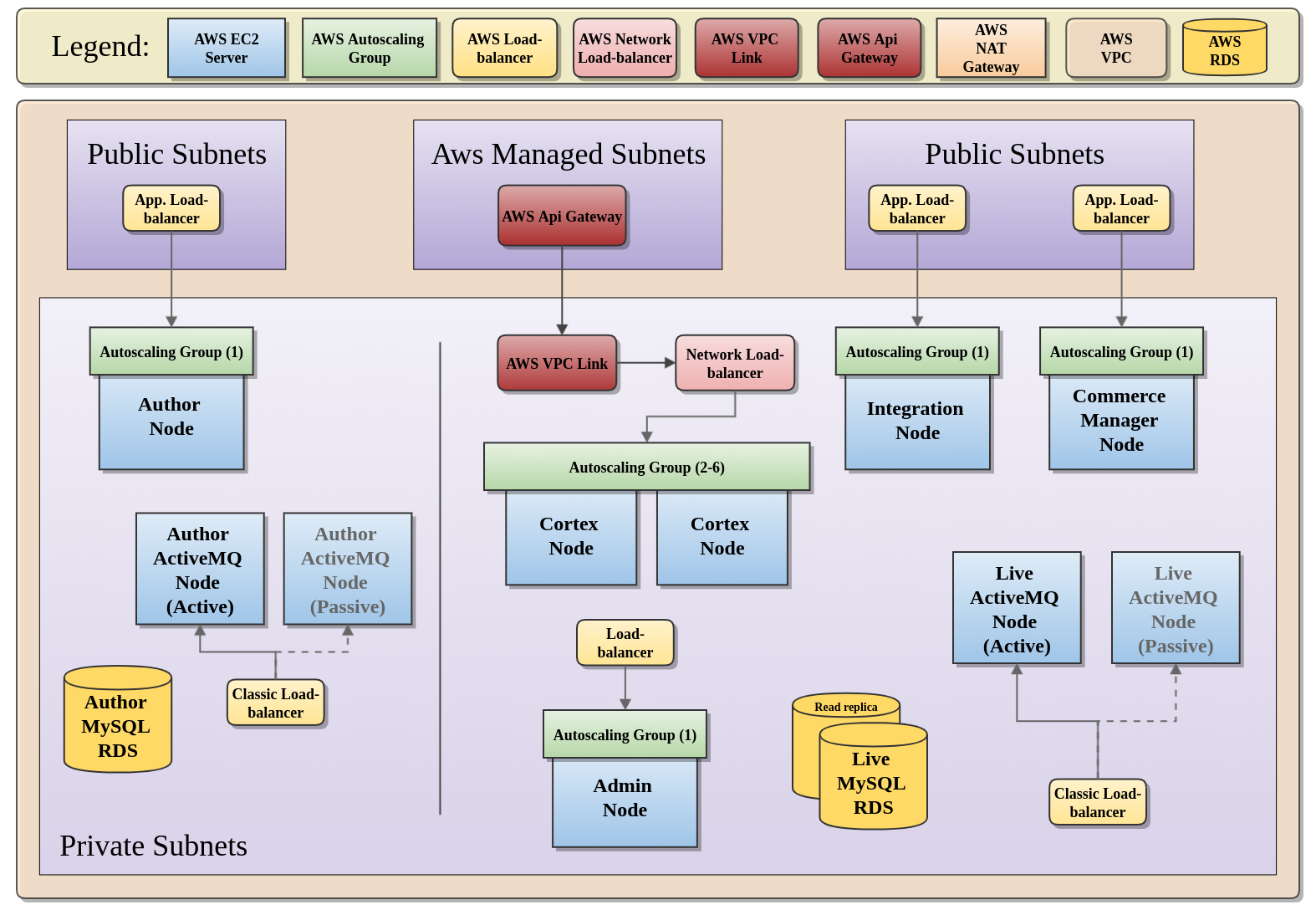
For more information, see Author and Live Architecture Overview.
Procedure
The DeployAuthorAndLive job deploys a complete Elastic Path Commerce environment that contains an Authoring environment and a Live environment. This job is located in the Jenkins job folder CloudOps, in the Jenkins view Deployments.
Ensure that the
InitPipelinejob completed successfully.- All required Docker images must exist in ECR. By default, the Jenkins jobs deploy the Author and Live environment using the Docker images and data created from the deployment package provided during the CloudDeploy initialization. If you want to deploy with a different deployment package, you must rebuild the Docker images using the BuildEpImage job
Ensure that the configuration for the deployment is correct.
- For more information, see Elastic Path Commerce Configuration
Run the
DeployAuthorAndLivejob.- The default parameters for this job are stored in the Consul server that is created by CloudCore. For more information about the parameters, see DeployAuthorAndLive Jenkins job
Monitor the deployment progress in the CloudFormation AWS console.
- The complete environment is created in approximately 40 minutes
- When the root CloudFormation stack completes successfully, the stack outputs displays the output that includes information, such as the load-balancer endpoint to the Elastic Path services in the Author and Live environment
- The following is an example output from the AWS CLI:
$ aws cloudformation describe-stacks --stack-name EP-Author-And-Live-Environment-1 --query 'Stacks[0].Outputs'
[
{
"OutputKey": "LiveApiGatewayEndpoint",
"OutputValue": "https://6ii84ackb5.execute-api.us-west-2.amazonaws.com/cortex"
},
{
"OutputKey": "AuthorApiGatewayEndpoint",
"OutputValue": "https://4q2k1e02ra.execute-api.us-west-2.amazonaws.com/cortex"
},
{
"OutputKey": "LiveApiGwCustomEndpoint",
"OutputValue": "https://live-cortex-gw.ep-preprod.cloudops.example.com/cortex "
},
{
"OutputKey": "AuthorApiGwCustomEndpoint",
"OutputValue": "https://author-cortex-gw.ep-preprod.cloudops.example.com/cortex "
},
{
"OutputKey": "LiveCmElbEndPoint",
"OutputValue": "cm.ep-preprod.cloudops.example.com"
}
]
Note: The endpoints only work if your DNS settings are set up correctly. For more information, see CloudCore DNS Configuration. If the DNS settings are not configured, you must reference the load-balancer’s unique DNS name to access the Elastic Path services. In addition, the API gateway custom endpoint domains will not be enabled unless CloudOps was deployed with an HTTPS Certificate.
- Validate the deployment. For instructions, see Validating an Author and Live Deployment section below
Validating Author and Live Deployment
After the root CloudFormation stack is completed successfully, you can perform the following validation steps to ensure that all apps are up and connected successfully:

Ensure all load balancer target groups are healthy
- In the EC2 AWS Console, go to the Target Group section
- For each Target Group, check the monitoring tab and ensure that the number of instances on the Healthy Hosts graph is correct
Note: Target groups created by an Author and Live environment have their names prefixed by
EP-Au-.
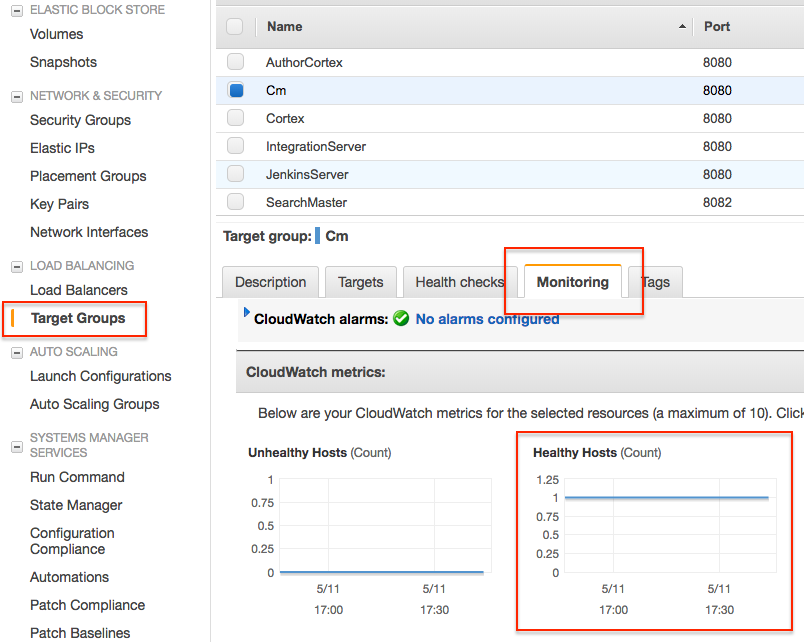
Figure 2. Healthy Target Groups.
Verify Cortex can send a message to ActiveMQ
Register a new user in Cortex
- Go to Cortex Studio
- Authenticate yourself as a public user
- Navigate to the Account Registration section
- Enter the required information and use valid email format
- Click registeraction
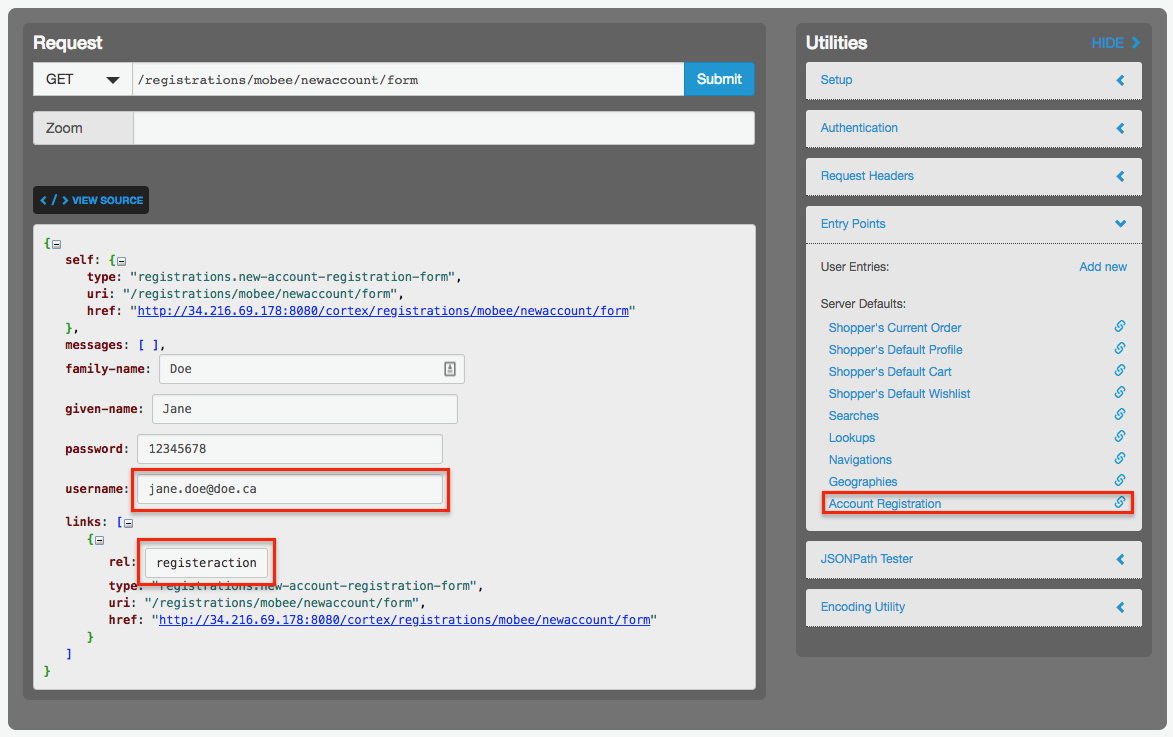
Figure 3. Registering a new user in Cortex Studio.
Ensure a new message is added to an ActiveMQ queue
Using the Bastion server, port-forward the Live environment’s ActiveMQ admin console to your local machine:
ssh -i <path-to-bastion-private-key>/<bastion-private-key-name> \
-L <local-port>:<healthy-activemq-private-ip>:8161 \
ec2-user@<bastion-public-ip>
Go to the ActiveMQ admin console using the port-forwarded port. For example, if you port-forwarded the ActiveMQ admin console’s port 8161 to your local machine’s port 8161 use the address http://localhost:8161/admin.
Log in with the default credentials. Then, click the queues tab.
Confirm the queue Consumer.customerRegistrationEmailHandler.VirtualTopic.ep.customers has a pending message.
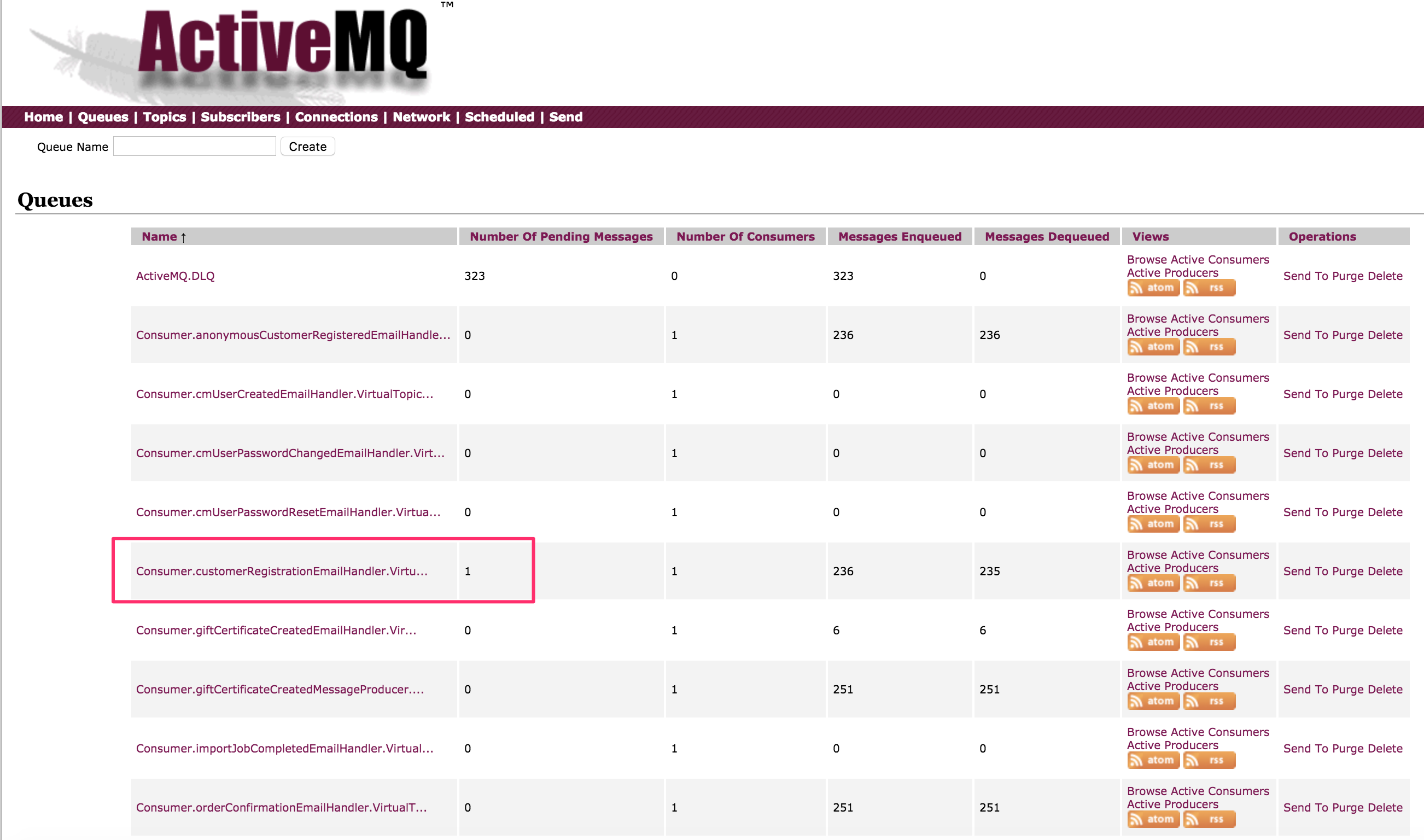
Figure 4. ActiveMQ email queue.
Ensure Commerce Manager uses search
Searching for promotions and shipping items
- Go to Commerce Manager
- Login as the admin user
- Navigate to the Promotions/Shipping tab
- Click Search. Ensure that the search result contains search result items

Figure 5. Searching for promotions and shipping items.
Reindexing search for an index
- Go to Commerce Manager
- Login as the admin user
- Navigate to the Configuration tab
- Click Search Indexes
- Click Rebuild Index for any index name
- Confirm the status goes from Rebuild Scheduled to Rebuild in Progress to Complete
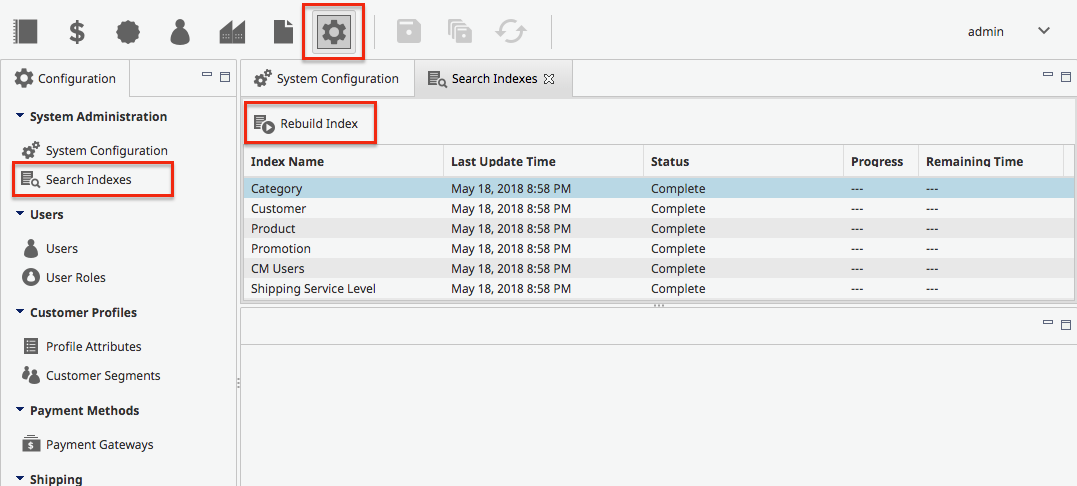
Figure 6. Rebuilding a search index from Commerce Manager.